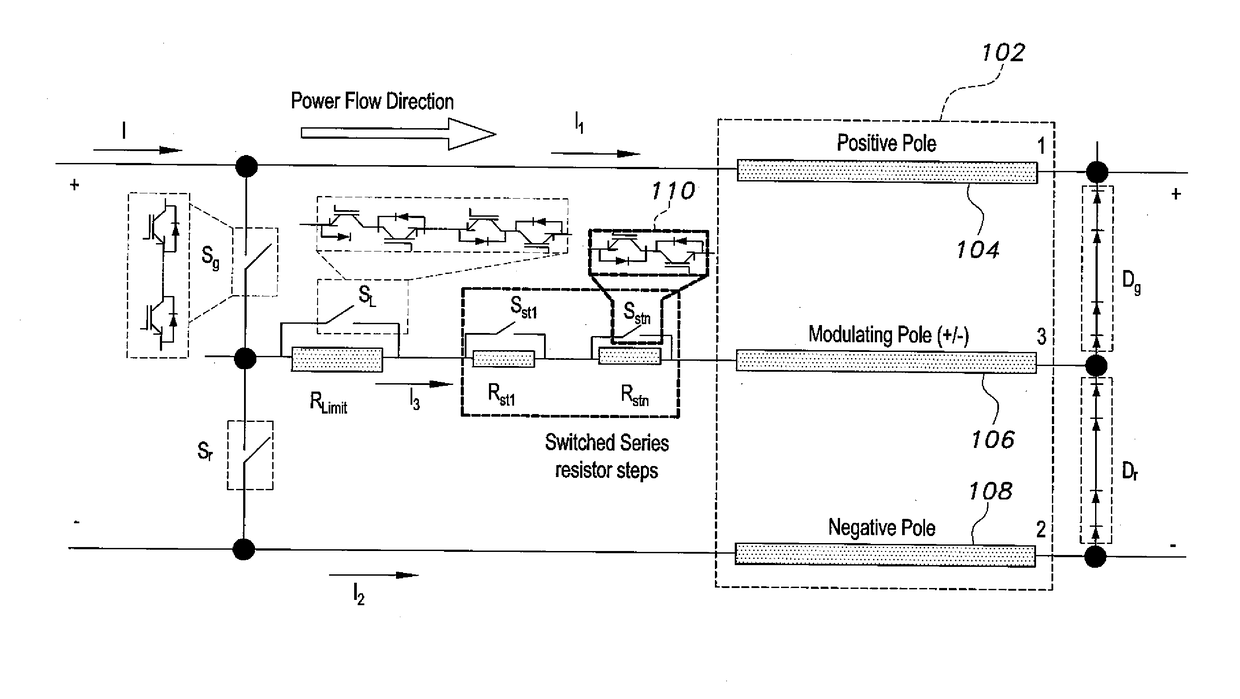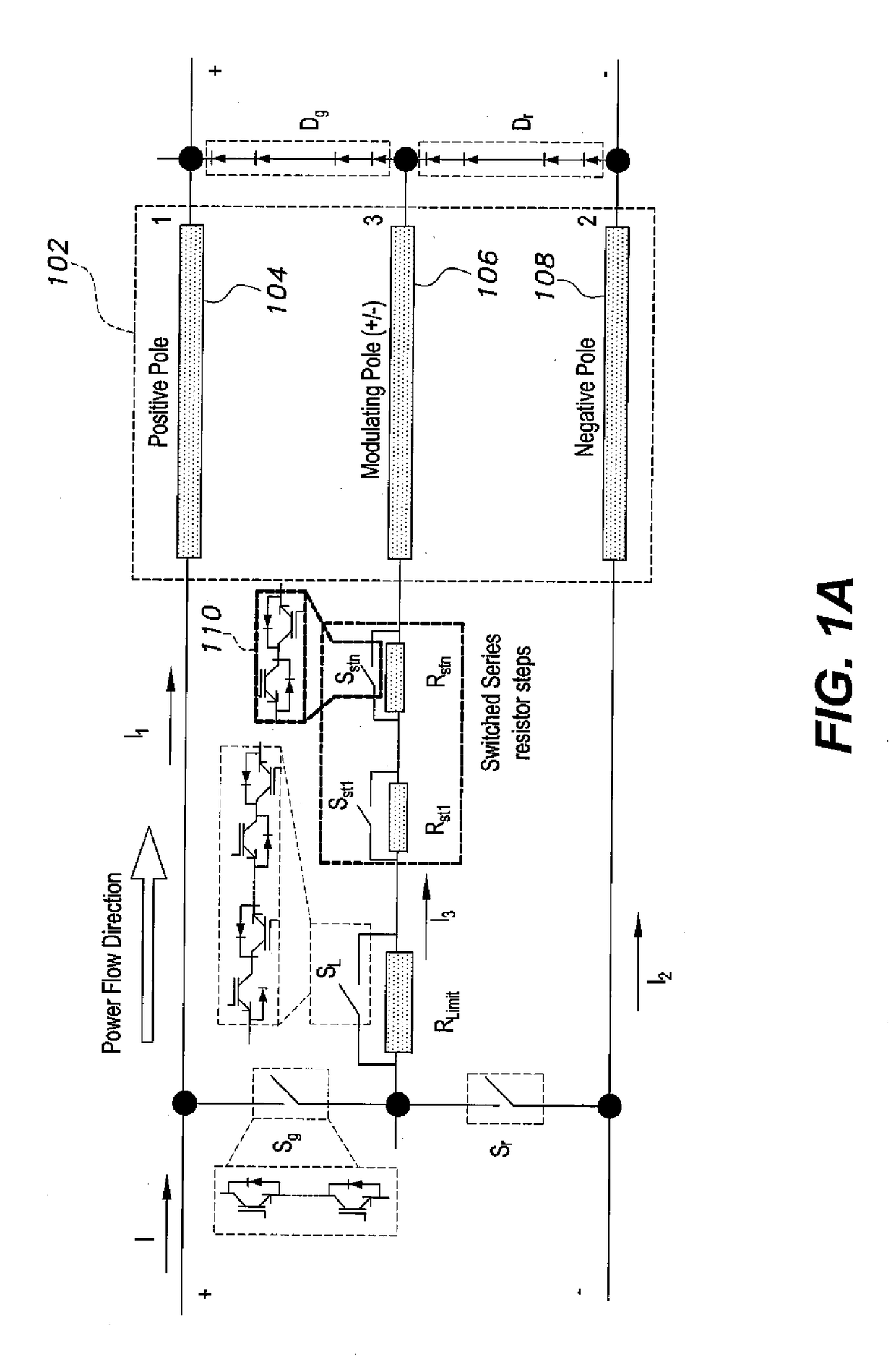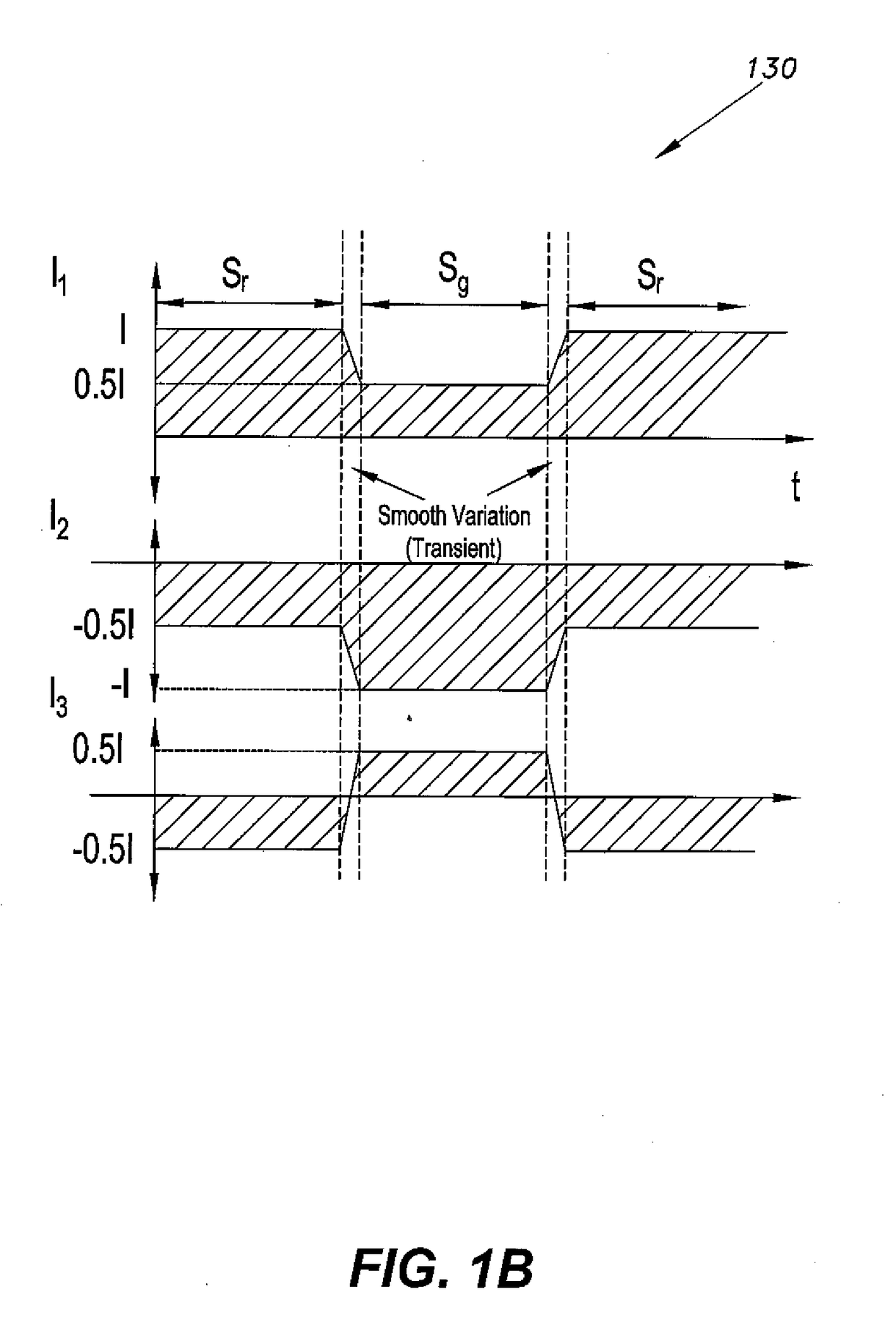Method of converting high voltage ac lines into bipolar high voltage DC systems
a high-voltage dc system and high-voltage ac technology, applied in the field of power transmission lines, can solve problems such as affecting system reliability and adding more complexity
- Summary
- Abstract
- Description
- Claims
- Application Information
AI Technical Summary
Benefits of technology
Problems solved by technology
Method used
Image
Examples
Embodiment Construction
[0041]As shown in FIG. 1A, the method of converting high voltage AC lines into bipolar high voltage DC systems makes use of the three transmission lines 102 in an existing high voltage AC system as transmission lines in a bipolar high voltage DC system, e.g., for the transmission of power from a DC source (such as a wind power electric generator) to a power grid. According to the method, the three transmission lines 102 are used in a three-wire mode when the source current exceeds the rated thermal current limit of the transmission lines 102, and are used in a two-wire mode when the source current is at or below the rated thermal current limit of the transmission lines 102. For purposes of explanation, one of the transmission lines 102 is referred to as the positive pole 104, a second transmission line is referred to as the modulating pole 106, and a third transmission line is referred to as the negative pole 108.
[0042]The method involves inserting switches Sg and Sr in series betwe...
PUM
 Login to View More
Login to View More Abstract
Description
Claims
Application Information
 Login to View More
Login to View More - R&D
- Intellectual Property
- Life Sciences
- Materials
- Tech Scout
- Unparalleled Data Quality
- Higher Quality Content
- 60% Fewer Hallucinations
Browse by: Latest US Patents, China's latest patents, Technical Efficacy Thesaurus, Application Domain, Technology Topic, Popular Technical Reports.
© 2025 PatSnap. All rights reserved.Legal|Privacy policy|Modern Slavery Act Transparency Statement|Sitemap|About US| Contact US: help@patsnap.com



